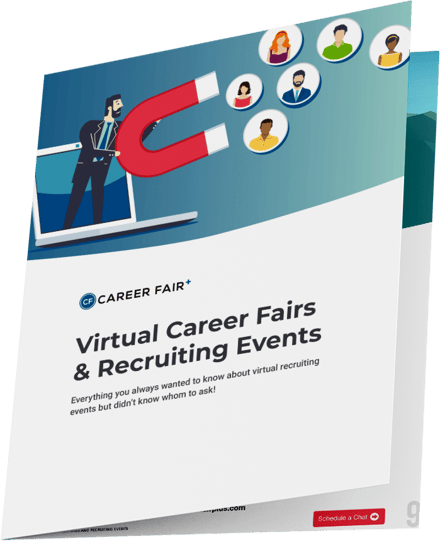
Since it’s recruiting season, let’s talk about college- or university-based career services teams using recruiting software to match students with entry-level career opportunities. There is no doubt that these platforms simplify and accelerate student job searches and employer talent acquisition. However, relying solely on this technology has its pros and cons.
For example, finding relevant jobs can be almost impossible with some recruiting software. Limited search criteria block students from filtering out hundreds, if not thousands, of unwanted positions. Fighting through giant databases with cumbersome or ineffective filters adds stress and wastes time. As do other disadvantages of relying exclusively on currently available recruiting technology to meet your career services team goals.
Disadvantages of Recruiting Software
Too many–and not enough–job options
In addition to the limited searchability of large databases mentioned above, students only see what employers choose to post. That sounds obvious, but the net effect is substantial: students face the two-pronged disadvantage of viewing too many and potentially not enough open roles.
Many STEM students see thousands of irrelevant jobs among the myriad opportunities, even when filtering and searching correctly. On the other hand, liberal arts students face the opposite challenge. Rather than seeing numerous irrelevant jobs, these large, database-driven platforms aren’t returning any jobs for them.
Students relying exclusively on this software and ignoring the expertise of career services are compromising their job searches. These professionals often have keyword or database search tips and essential direct connections to employers and recruiters. Some job descriptions don’t read well in a template; career services teams can communicate these nuances to students when software cannot. Job searching exclusively with technology might also mean missing out on job opportunities promoted directly with career services teams.
Lack of personal connection
While these platforms are convenient, they can also make it difficult for students to connect personally with potential employers. Submitting generic cover letters and resumes can make it hard to stand out from the crowd. For example, imagine a liberal arts student with proven social media and video marketing experience. How do they demonstrate those skills on a one-dimensional resume or character-limited text box in the software? However, a five-minute online chat might result in the company’s best hire to date!
Highly skewed interest to select majors
With so many students relying on these platforms to find early career jobs, the competition can be intense—at least for in-demand majors. Similar to the first disadvantage above, recruiters frequently overwhelm high-value students while ignoring thousands of their ready-to-work peers. Limited or no interest from employers is discouraging, to say the least, and these job seekers often abandon the recruiting platform no closer to interviewing or a full-time employment offer.
Dependency on Technology
These platforms are only as good as the software codes and features. If the platform experiences technical issues, students may be unable to access job openings, submit applications, or provide promised follow-up material.
Advantages of Recruiting Software
Convenience
Students can search a vast database of entry-level job openings at their convenience. In addition, students can usually apply to multiple jobs with just a few clicks using stored resumes and cover letters, which is more efficient than creating new materials for each application.
Networking opportunities
These platforms allow students to connect with potential employers and alums who can help them build their professional network. They can also use these platforms to attend virtual career fairs, participate in online interviews, and attend digital events sponsored by potential employers.
Time-saving
Recruiting software saves students a lot of time as they can search for job openings, apply for multiple jobs, and receive notifications about interviews all in one place.
Today's recruiting software is a valuable tool and can supercharge students' searches for early career opportunities. These platforms are convenient, and keyword filters save job seekers and employers time. Unfortunately, the disadvantages, like fewer personal connections, limited job options, and intense competition, tend to dehumanize recruiting.
Blending in career services professionals’ expertise with purpose-built software gives students the best way to facilitate producing student-employer connections. If that sounds like the solution your career services team is waiting for, request the Career Fair Plus (CF+) newsletter or follow our social media. We’re launching a new product later this year!
